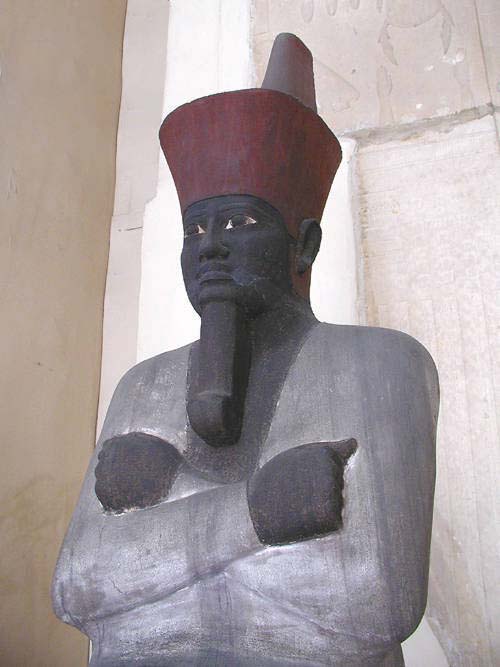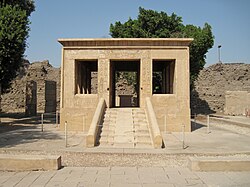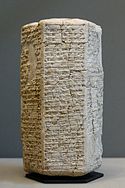Mentuhotep Seated edit
Seated statue of Nebhepetre Mentuhotep II, in the Egyptian Museum, Cairo. Painted Sandstone, 11th Dynasty.
- Egyptian Museum, Cairo. Main floor - gallery 26. Sandstone: height 138 cm, width 47 cm. JE 36195.

|
This file was transferred from Egypt Archive website under the license Copyrighted free use (see permission here). In short: you are free to use it for any purpose including unrestricted redistribution, commercial use, and modification.
This is Mr. Jon Bodsworth's statement about his pictures from Egypt Archive: "All the photographs on this site are from my own originals and are copyright free. They can be reproduced in any medium. If you use any on the web I would appreciate an email. This site was designed to put as many photographs on the web as possible in an easy to use format. I have deliberately kept captions to a minimum but if you would like more information on any of the photographs let me know. The photographs on this website are only a small proportion of over 3,500 that I have covering many areas of Egypt. If there is a specific photograph that you are looking for please let me know." If you use any of the pictures on the web, the author Jon Bodsworth would appreciate an email: jon@egyptarchive.co.uk As of March 2011, Egypt Archive website was closed so if a file is uploaded after that time we need further proof of permission. |
Relevante Bilder
Relevante Artikel
Totentempel des Mentuhotep II.Der Totentempel des Mentuhotep II. ist ein Totentempel, den Mentuhotep II., altägyptischer König (Pharao) der 11. Dynastie, erbauen ließ. Der Tempel liegt auf dem thebanischen Westufer im Talkessel von Deir el-Bahari, ganz in der Nähe der Saff-Gräber von Mentuhoteps Vorfahren. Er ist historisch und baugeschichtlich ein wichtiges Denkmal und Zeugnis für den Übergang von den Pyramidentempeln des Alten Reichs zu den Millionenjahrhäusern des Neuen Reichs. .. weiterlesen
20. Jahrhundert v. Chr.Das 20. Jahrhundert v. Chr. begann am 1. Januar 2000 v. Chr. und endete am 31. Dezember 1901 v. Chr. Dies entspricht dem Zeitraum 3950 bis 3851 vor heute oder dem Intervall 3632 bis 3546 Radiokohlenstoffjahre. .. weiterlesen






























